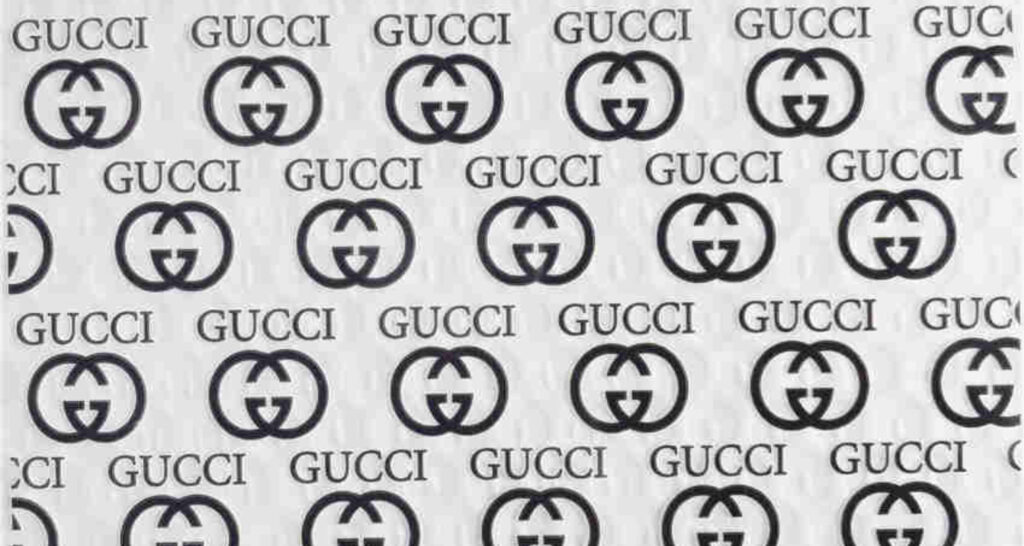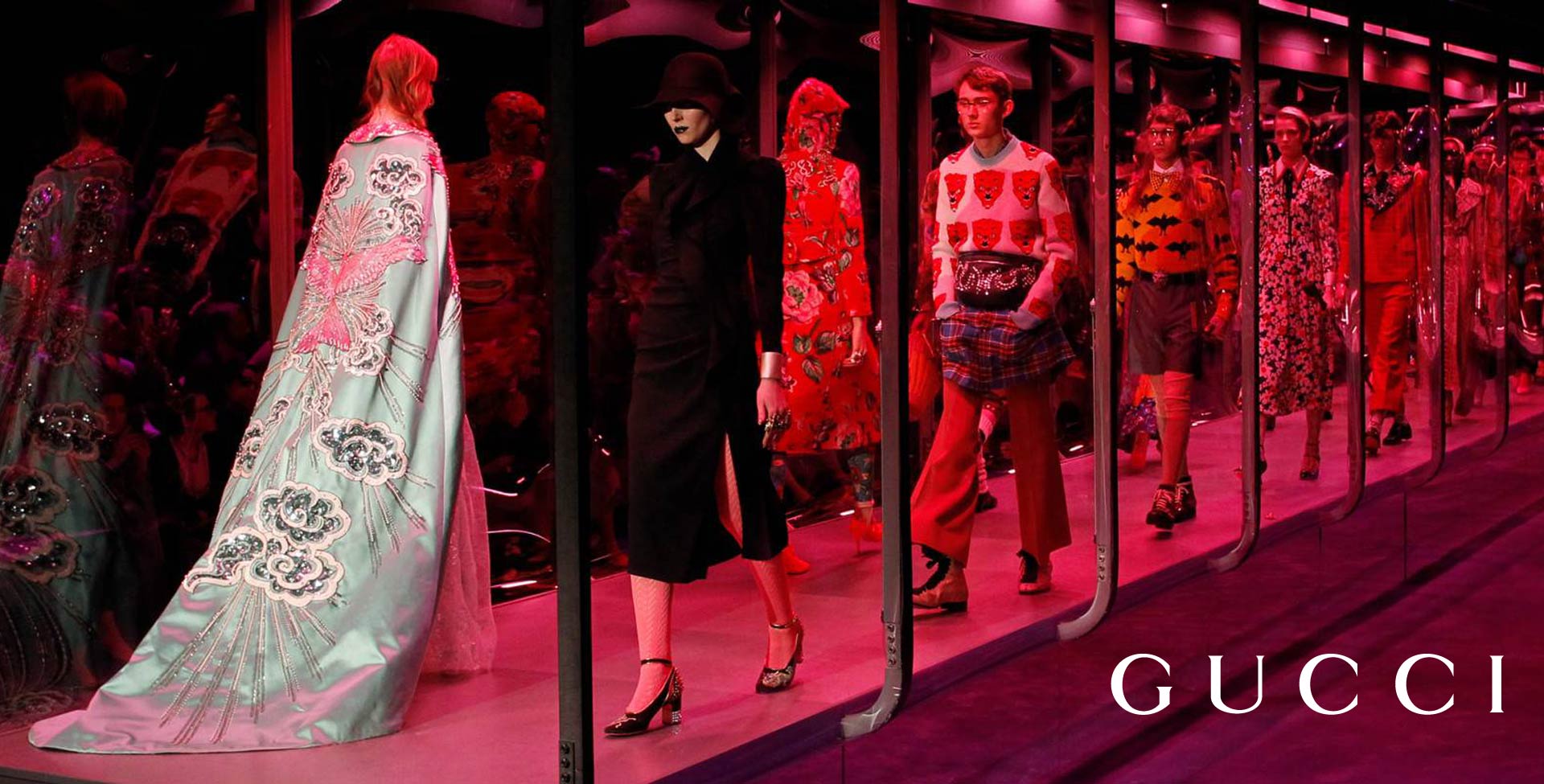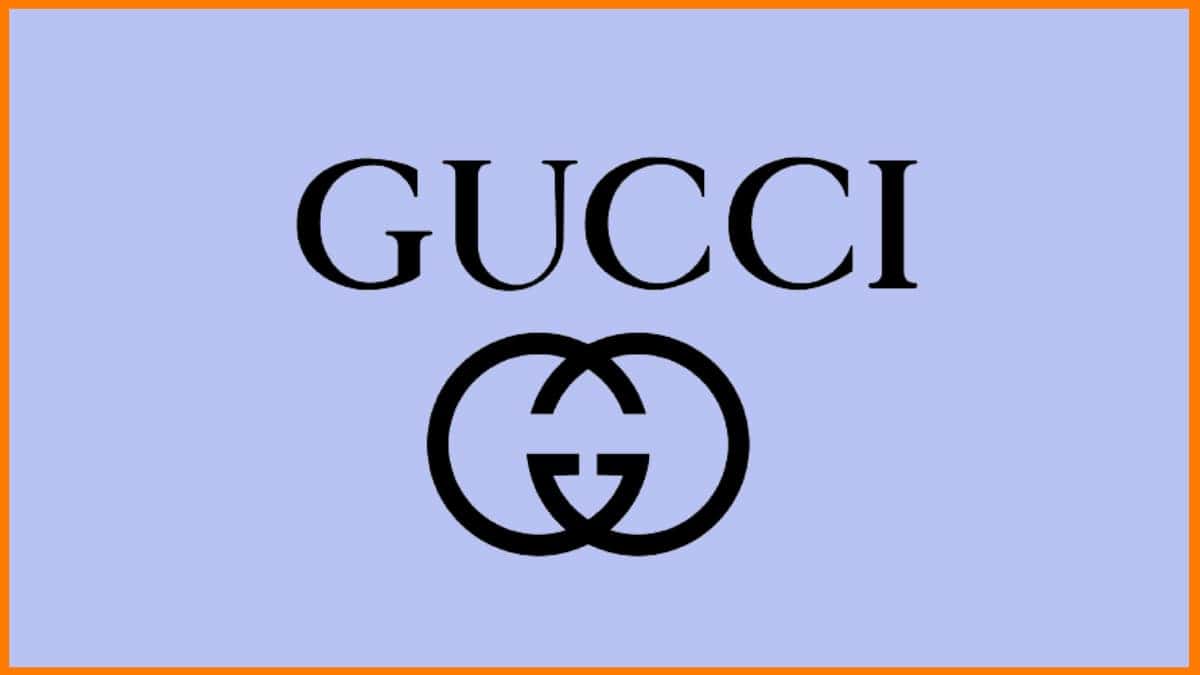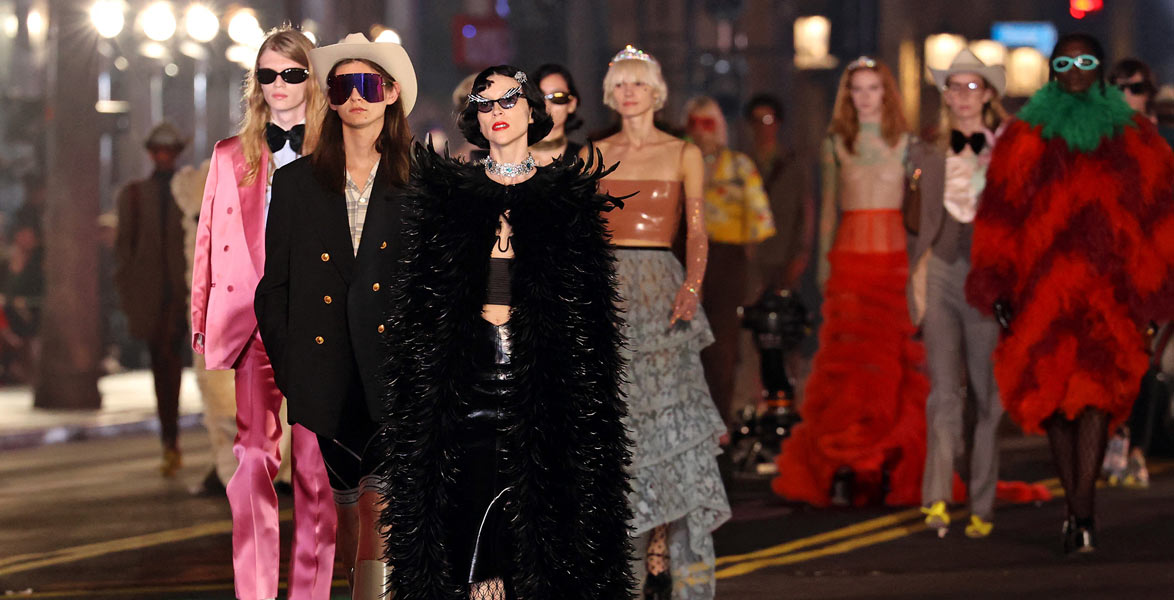In the dynamic realm of fashion, few brands can rival Gucci’s iconic status and lasting influence. Established in 1921 as a modest leather goods workshop, Gucci has become a global powerhouse in the industry.
Its journey from these humble beginnings to prominence can be primarily attributed to Gucci’s marketing strategy. This strategy, characterized by a fusion of heritage and innovation, has propelled Gucci to the forefront of the fashion world. Also, it has set a benchmark for other brands to aspire to.
Gucci’s ascent is not just a narrative of fashion but a saga of strategic marketing acumen.
While the exquisite design remains at its core, the strategic deployment of its marketing approach has enabled Gucci to transcend generations and remain an enduring symbol of luxury. From its inception, Gucci’s commitment to crafting products of impeccable quality was a testament to its founder’s dedication.
However, Gucci’s marketing strategy’s evolution marked its transformation from a local artisanal endeavor to an international fashion phenomenon.
Deciphering how the brand’s distinctive Gucci marketing strategy elements, such as branding, storytelling, inclusivity, and innovative retail experiences, have synergistically contributed to its unparalleled triumph in the fiercely competitive fashion landscape. You can also check out 7 Different Types of Target Examples for Fashion.
See also: Gucci’s Marketing Strategies and Examples Through Years
Gucci’s Marketing Strategy: Origins of Gucci’s Marketing Brilliance
Gucci’s journey from a small Italian leather goods manufacturer to a global fashion powerhouse reflects its evolving marketing prowess.
Founded in 1921 by Guccio Gucci, the brand initially focused on precision and quality, establishing a reputation for exquisite craftsmanship. However, it was in the 1990s, under the visionary leadership of Tom Ford, that Gucci’s marketing trajectory shifted. Ford’s audacious campaigns blurred traditional gender lines and embraced provocative aesthetics, igniting controversy while sparking curiosity.
This transformation marked the beginning of Gucci’s modern marketing narrative, blending boldness with sophistication to capture the attention of a new generation of luxury consumers.
The seamless fusion of tradition and innovation underscores Gucci’s marketing brilliance. The brand’s timeless double-G logo, designed in the 1960s, remains an emblem of luxury. This logo, interwoven into various products, serves as a status symbol and a testament to the brand’s heritage.
Gucci’s marketing strategy artfully marries this heritage with contemporary trends, celebrating both the past and the present. It maintains relevance without sacrificing historical significance by reimagining iconic designs and collaborating with artists and influencers. You can also check out the Full Marketing Strategy of Coca-Cola (4Ps) – Updated 2024.
Key Elements of Gucci’s Marketing Strategy
Central to Gucci’s marketing strategy is its unwavering commitment to crafting a lifestyle rather than merely selling products.
Gucci doesn’t just design clothes; it designs narratives that resonate with its audience.
The brand’s campaigns often transport viewers to different eras and cultures, immersing them in stories that tap into human emotions and aspirations. This storytelling approach elicits emotional connections, forging bonds between consumers and the brand that transcend mere transactions.
Furthermore, Gucci’s marketing genius lies in its mastery of exclusivity. Limited edition releases and collaborations with artists, designers, and even unexpected partners generate buzz and anticipation.
These strategic moves cultivate a sense of urgency among consumers, driving demand while solidifying Gucci’s position as a trendsetter. Gucci effectively employs scarcity as a marketing tool by consistently unveiling unique and highly coveted products. You must also check out Burger King’s Marketing Strategy and Branding [Case Study].
Gucci’s Branding Mastery
The mastery of Gucci’s branding transcends just a mere design.
It is an artful fusion of the tangible and the intangible, turning a logo into a full-fledged lifestyle. This transition from a symbol of luxury to an embodiment of culture exemplifies the profound impact of Gucci’s branding strategy.
At the heart of this branding mastery is Gucci’s iconic double-G logo. Crafted in the 1960s by Aldo Gucci, the logo has become synonymous with sophistication and exclusivity.
However, Gucci’s brilliance lies in the logo’s visual appeal and ability to evoke a sense of history and heritage.
The logo bridges the brand’s storied past and its present-day influence, resonating with consumers seeking timeless elegance and contemporary relevance.
In the fashion world, where trends are fleeting, the double-G logo is an enduring emblem that encapsulates Gucci’s essence.
The Power of Storytelling in Gucci’s Marketing:
Within Gucci’s marketing strategy, storytelling emerges as a powerful thread that weaves together a tapestry of emotion, aspiration, and connection. Far beyond mere fashion, Gucci employs storytelling to ignite imaginations, evoke nostalgia, and elevate its products into symbols of personal significance.
Gucci’s storytelling prowess is rooted in its ability to transcend the boundaries of clothing, allowing consumers to become part of a larger narrative.
Through captivating campaigns, the brand crafts narratives that extend beyond the stitches and fabrics, tapping into the essence of the human experience.
Each collection becomes a chapter, and every product a character, contributing to a broader tale of identity, self-expression, and societal transformation.
Read also: L’Oréal SWOT Analysis: Beauty Brand’s Strategy Breakdown
Gucci’s Inclusive Approach to Target Markets
Gucci’s marketing brilliance extends beyond creating exquisite fashion.
It’s about creating a cultural phenomenon that resonates with a diverse global audience.
Gucci’s commitment to an inclusive approach to target markets is at the heart of this triumph. This strategy defies conventional boundaries and embraces the kaleidoscope of human identities and experiences.
Gucci’s inclusivity is a refreshing paradigm shift in an industry often criticized for exclusivity.
The brand recognizes that luxury and style are not confined to a single demographic; they are aspirations shared by people from all walks of life.
Gucci’s campaigns showcase models of various ethnicities, ages, and body types, sending a resounding message that fashion is a canvas for individual expression, irrespective of societal norms.
Check this out: SWOT Analysis of Gap: Retail and Apparel Brand
Frequently Asked Questions
What challenges has Gucci faced in implementing this strategy?
It has faced challenges, including pitfalls like tokenism and cultural appropriation. The brand must ensure that its inclusivity is authentic and respectful.
How can other brands learn from Gucci's inclusive approach?
Other brands can learn from Gucci's inclusive approach by recognizing the importance of representation. Also, engaging with diverse communities and incorporating inclusivity into their design, marketing, and collaboration processes.
What is the future of Gucci's inclusive marketing strategy?
The future of Gucci's inclusive marketing strategy appears promising. As society continues to prioritize diversity and representation, the brand's commitment to inclusivity will likely remain a cornerstone. Setting an example for the evolving fashion industry.
Conclusion
Gucci’s approach to target markets shines as a beacon in a world where diversity and inclusivity have become rallying points. The brand’s steadfast commitment to celebrating the beauty and individuality of all individuals, regardless of their backgrounds, speaks volumes about its understanding of the evolving global landscape. By casting a wide net encompassing people from various cultures, ages, sizes, and walks of life, Gucci challenges the conventional norms of luxury fashion and reflects the dynamic tapestry of our interconnected world.
Gucci’s inclusive marketing strategy isn’t just about redefining fashion; it’s about transforming perceptions and fostering a sense of unity. It acknowledges that style is a universal language that transcends boundaries, a medium through which personal stories are expressed. As Gucci opens its doors to a diverse audience, it invites them to embrace their distinctiveness to a collective empowerment narrative. In the grand tapestry of fashion, Gucci’s commitment is a testament to the brand’s enduring legacy. At the same time, luxury embodies the human experience itself.
See also: How to start a business on Instagram? (25+ Best Instagram business ideas)






